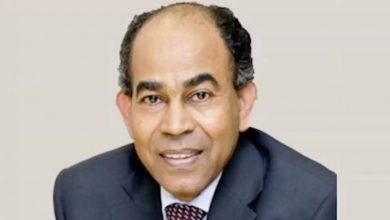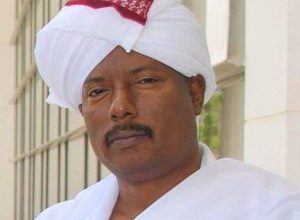Opinion
Sudanese Islamists: Why They Couldn’t Achieve Success and How They Rise Again (3–6)

By Dr. Al-Dardiri Mohammed Ahmed
(On Organization)
Reform movements in Islamic history have traditionally revolved around a leading reformer, who develops the idea and devises the means to disseminate it, without necessarily establishing a collective institutional framework for followers to contribute to. Despite Jamal al-Din al-Afghani creating a network of disciples across the Islamic world—such as Muhammad Abduh—and despite Abdul Rahman al-Kawakibi calling in his book The Nature of Despotism for the organization of the nation’s efforts, neither of them founded an actual group or collective movement. Thus, the credit for pioneering modern Islamic organization goes to Imam Hassan al-Banna, the martyr. Al-Banna was the first to establish a modern organizational structure for Islamic advocacy, modeled after European associations.
To justify the legitimacy of organization in Islamic work, al-Banna referred to early Islamic practices, such as Prophet Muhammad ﷺ starting his mission secretly in the house of Al-Arqam and the two pledges of Aqabah, which were frameworks for organizing relationships based on commitment. However, since al-Banna’s organizational structure was without precedent, it remained relatively simple, suitable for a secretive advocacy association. This structure, however, was not fit for the purposes the Sudanese Islamist movement later set for itself.
After the Sudanese movement became independent from the international organization, it modified the structures it had inherited from Egypt, drawing on two additional primary sources: Western organizational models for parties and associations and the Sudanese Communist Party. While the first source seems natural, the second appears less so. On this, Hassan al-Turabi noted:
“The movement also took something from the methods of organization and activism of an unfamiliar source—the Communist movement—which dominated student circles and was rising in modern society generally. Moreover, some members who later established the Islamic movement had previously passed through the Communist movement, benefiting from its organizational experiences, such as building secret cells and training active members.”
However, the unconventional source of inspiration wasn’t the only issue with this approach. The organizational framework that Sudanese Islamists established in the 1960s was initially simple. Over time, through successive reforms, it became more complex, adapting to the expanding membership and the increasing breadth of activities.
The most significant factor driving the complexity of the Sudanese Islamist organization was the idea of the “parallel organization,” borrowed from the Communist Party. This approach entailed creating a public auxiliary structure to interact openly with the general populace, alongside the core movement represented by controlling cells. For instance, in 1965, Sudanese Islamists established the Islamic Charter Front as a parallel organization to their original movement. They replicated this model when founding the Islamic Front in 1985 and later when establishing the National Congress Party under the Islamic Salvation regime. However, in the latter case, the Islamic movement remained a public entity without registering as a political party. Registering as a party would have legally required it to open its membership to any Sudanese individual, which was inconsistent with the movement’s closed structure that accepted members only through recommendations. Thus, while the party served as the political facade, the movement remained the overarching entity for social action, encompassing all aspects of life—education, training, charity work, and providing moral and material support to members in difficult times.
Despite the advantages of the parallel organization—mobilizing the masses and political forces into broad coalitions while preserving the core movement’s integrity—it also caused several issues. Firstly, it created a sense of elitism among members, who saw themselves as the conscience of the Islamic project. Some members mistakenly believed that merely joining the movement improved their personal faith, making them morally superior and immune to corruption. This mindset contradicted the movement’s earlier rejection of the Muslim Brotherhood’s approach, which, as Turabi criticized, positioned the Islamic entity as a group apart from society, engaging in debates rather than integration.
Furthermore, the parallel organization undermined trust between Islamists and their collaborators, both individuals and entities. Over time, as it became apparent that the Islamists operated dual structures—an internal one for the elite and a public one for the masses—those outside the core movement grew suspicious of decisions being made behind closed doors. This eroded the cohesion of alliances and external collaborations, making them fragile and prone to mistrust.
Internally, the parallel organization also hindered the Islamists themselves, affecting their performance in constitutional institutions. It established a tradition of pre-determining political arrangements internally—similar to Communist practices—before discussing them in official forums. This limited the independence of individual members’ opinions within legislative institutions, weakening principles such as the separation of powers. For example, the legislative authority, including both houses of the national assembly, was often controlled by the executive authority due to directives from internal meetings. Such practices undermined the distinct roles of the two chambers and the independence of trade unions, state governments, and other federative institutions, reducing their autonomy and effectiveness.
While European parties also provide general policy guidelines, they avoid issuing detailed instructions that restrict members’ independence or prevent them from responding to the unique and evolving concerns of their constituents. As Sudan’s federal experiment continues to develop, balancing local tendencies with central state interests will require rules and structures rooted within constitutional institutions rather than external frameworks.
The concept of the parallel organization, adopted by Sudanese Islamists, later influenced other Islamic movements, which experienced similar challenges and sought to mitigate the drawbacks. In Morocco, complaints emerged that political activities overshadowed cultural, educational, and advocacy work. Similarly, in Jordan, concerns were raised about discrimination within the movement. The issue received more attention in Tunisia, where, after the 2011 revolution, the Ennahda Movement intensified its political engagement and faced growing calls to end the duality.
In May 2016, during its tenth congress, Ennahda announced the separation of its advocacy and political functions, marking a historic shift. The advocacy entity focused on cultural, educational, and civil society work, while the political entity managed public affairs through elections and democratic institutions.
Ultimately, the idea of the parallel organization, rooted in Marxist-Leninist traditions, carried ideological and operational implications that were incompatible with the principles of Islamic advocacy. Originating from Lenin’s 1902 book What Is to Be Done?, the strategy called for creating a small, secretive vanguard party led by professional revolutionaries. By adopting such tactics, Sudanese Islamists overlooked the ethical foundations central to Islamic values. As the Prophet Muhammad ﷺ warned against secretive interactions that could lead to exclusion and harm, Islamists should have steered clear of tactics rooted in Leninist practices.
If the introduction of organizational structures to Islamic work was initially an exception dictated by modern circumstances, it has since become a norm. However, the Sudanese Islamist movement’s enduring tradition of revising and refining its organizational frameworks to suit changing contexts is a testament to its adaptability. While this approach ensures its relevance, it also highlights the need for constant vigilance to avoid diverging from core Islamic values and ethics.



